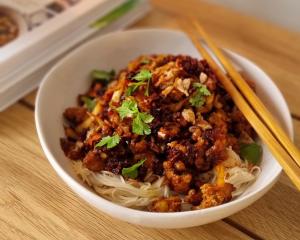

During World War 1, New Zealand's food supplies were not as affected as they were in World War 2.
The government imposed price controls on certain staples, but meat, butter, flour and sugar prices all climbed and exports were affected by a shortage of ships.
However, the war was reflected in cookbooks with recipes that bore the name German being renamed - German biscuits became Belgium biscuits.
In 1915, the name Anzac was given to small cakes and a pudding but by 1919, rolled oat biscuits had become known as Anzac biscuits.
In World War 2, from 1942 sugar was rationed with coupons. However, New Zealanders could buy up to 340g, compared with the 227g allowed in Canada, and they got an extra allowance for making jam or preserving.
Leach says housewives concentrated on recipes with smaller quantities of sugar or tried substitutes such as golden syrup or treacle, which were not rationed.
''Not all types of baking could be successfully modified this way.''
Her mother's copy of the War Economy Recipe Book, from about 1943, included 39 baking recipes but only two were without sugar - a health loaf and Victory Gems, sweetened with golden syrup.
In cakes and biscuits where texture was important, it was more common to supplement sugar with another sweetener than replace it altogether, she says.
Butter was also rationed - first 227g and then 170g in 1945 - but housewives were just as concerned about the shortage of eggs, Leech says.
During this time, many familiar brands of baking powder disappeared and cream of tartar supplies nearly dried up.
The price of baking powder rose steeply and a new version of baking powder, Acto Cake Powder, was created in 1941. This product disappeared from advertisements in the mid-1950s.
The composition of white flour also changed in 1946, when millers were required to raised the extraction rate from 73% to 80% to include more wheat germ to fortify the flour with vitamins. It was reduced to 78% in 1949.
''Good cooks complained that their cakes staled more quickly and lacked lightness.''
During the 1940s there were also other food shortages. Pasta imports ceased, greaseproof paper was scarce and a scarcity of rubber affected preserving in which rubber rings were needed to seal jars.
 Photo: ODT files
Photo: ODT files

Chocolate Anzac biscuits
Ingredients
125g butter
1 Tbsp golden syrup
1 tsp baking soda
2 Tbsp boiling water
1 cup sugar
1 cup flour
1 cup rolled oats
150g chocolate chips
Method
Melt the butter and stir in the golden syrup. Dissolve the baking soda in the boiling water and add to the butter and syrup. Stir in the sugar, flour and oats.
Grease a baking tray. Roll the mixture into balls and flatten with a fork until very thin. Bake at 180degC for 7-10 minutes. Keep an eye on them as they will burn easily.
Melt the chocolate chips with a splash of oil and spread in a thin layer over the cool biscuits.
- From Portobello Cafe
 Photo: Getty Images
Aussie crisps
Photo: Getty Images
Aussie crisps

Ingredients
280g rolled oats
10g sugar
20g butter
1 Tbsp golden syrup or treacle
pinch of salt
Method
Combine melted butter and syrup. Stir in sugar and rolled oats, a pinch of salt and mix well. Put into well-greased baking dish and bake in moderate oven 20 minutes. When cold cut into lengths.
- War Economy Recipe Book
 Photo: Getty Images
Tripoli biscuits
Photo: Getty Images
Tripoli biscuits

Ingredients
110g butter or margarine
1 Tbsp golden syrup or treacle
2 Tbsp boiling water
1 large cup flour
1 large cup rolled oats
1 large cup coconut
½ cup sugar
2 small tsp baking powder
Method
Heat butter or margarine, syrup and boiling water in a saucepan and melt, but do not boil.
Remove from heat and stir in flour, rolled oats, coconut, sugar and baking powder. Mix well.
Put on cold tray in spoonfuls, press flat, and bake in moderate oven.
- War Economy Recipe Book.












